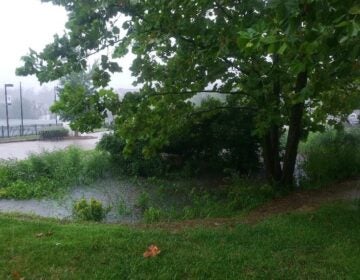‘Long Live Sturgeon!’: WHYY, Academy of Natural Sciences host discussion on endangered fish
Scientists discussed the importance of protecting endangered species during an event hosted by WHYY and the Academy of Natural Sciences of Drexel University.
Listen 1:21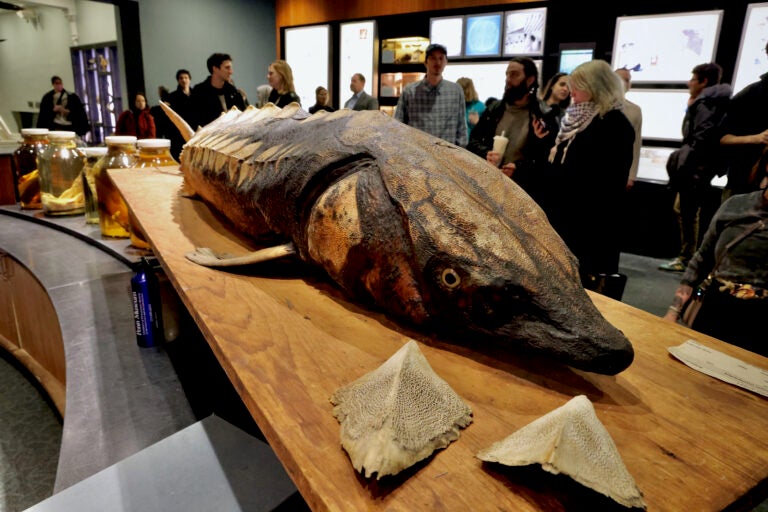
An Atlantic sturgeon preserved more than 100 years ago with straw and creosote is part of the collection of the Academy of Natural Sciences of Drexel University. (Emma Lee/WHYY)
From Philly and the Pa. suburbs to South Jersey and Delaware, what would you like WHYY News to cover? Let us know!
A small crowd gathered inside a gallery at the Academy of Natural Sciences of Drexel University to learn more about ancient fish found in the Delaware River.
Small children oohed and ahhed as the Academy’s fish collection manager Mark Sabaj showed them a 5.5 ft. Atlantic sturgeon, preserved for more than 100 years.
“You can touch it, it won’t bite,” Sabaj said to one of his captive young audience members.
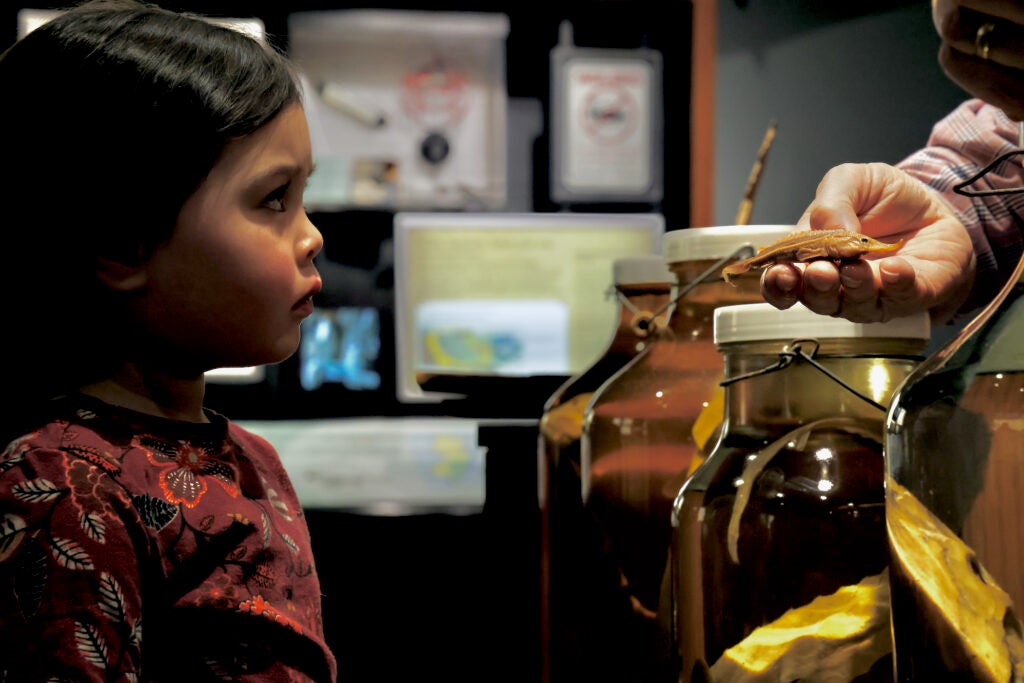
The Atlantic sturgeon have been around for 70 million years — predating the dinosaurs. These monumental fish with shark-like fins even survived the Chicxulub asteroid, which caused the great extinction event at the end of the Cretaceous Period.
But the species has become endangered — threatened by habitat loss, dams, poor water quality and vessel strikes. In the Delaware River, there are only about 200 estimated sturgeon left.
Researchers joined WHYY’s Maiken Scott on Thursday evening to discuss more than 50 years of the Endangered Species Act. The speakers highlighted the importance of researching and protecting the sturgeon, and other vulnerable species.
“Atlantic sturgeon, and sturgeons generally, are a good, unfortunately, poster child for the endangered species designation,” said guest speaker Eric Hilton, a marine science professor at William & Mary. “What I hope to pass on is that there are things that we can do in our daily lives to help conserve the habitats, conserve populations, and move on from there.”
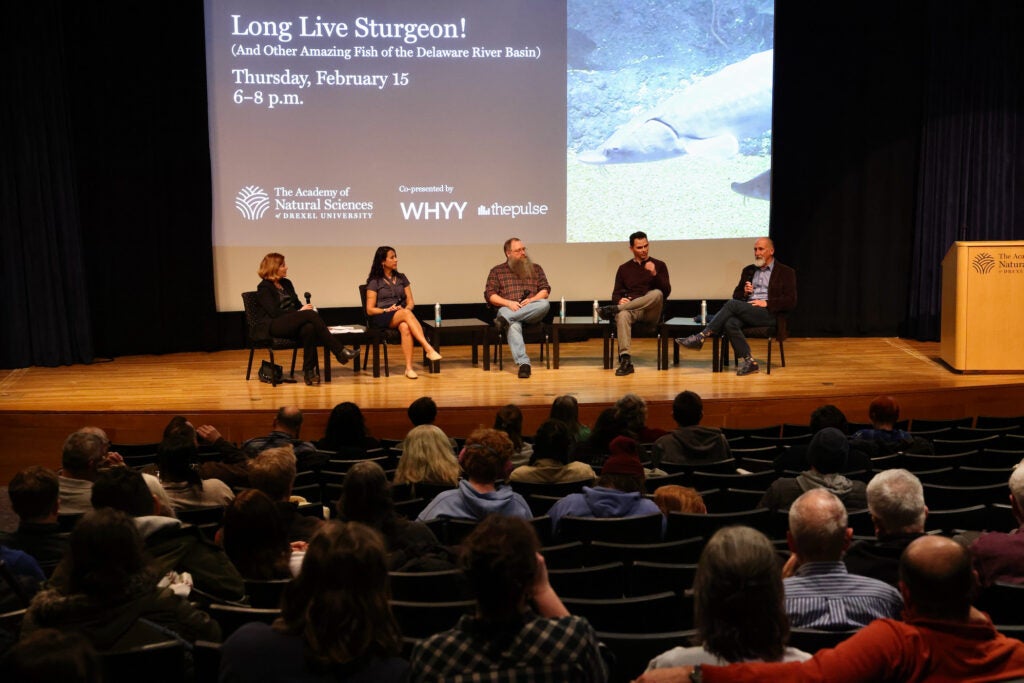
The 14-foot-long fish was found in as many as 38 rivers throughout eastern North America for millions of years, including in the Delaware River.
However, their numbers diminished drastically following the caviar rush in the late 1800s. At one time, the Delaware River was the largest producer of sturgeon in the world and supplied the global demand for the delicacy.
The species, which can weigh up to 800 pounds, have since been impacted by poor water quality and vessel strikes.
Dredging has had a major impact on fish populations, said Dewayne Fox, a fisheries professor at Delaware State University. Deepening waterways can help a river become passable for larger cargo vessels — but sturgeon are often killed by propellers, he said.
In the Philadelphia region, sturgeon spawn in the middle of where shipping activities occur, Fox said.
“We have to have commerce. But I would argue we should also give these things a chance too,” he said during the panel discussion.
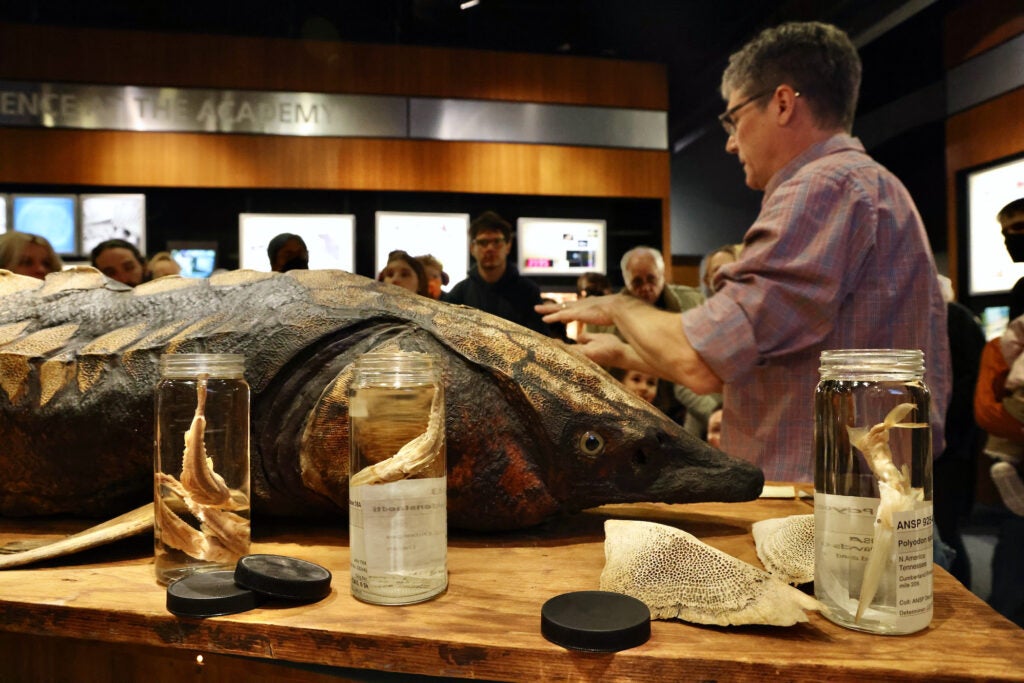
The habitats of sturgeon and other fish species are also impacted by sediment pollution caused by deforestation and agricultural practices. Ammonia discharged into the river from wastewater facilities can also reduce oxygen levels in the water, making it difficult for fish to survive.
The U.S. Environmental Protection Agency recently proposed federal water quality standards for the first time to determine the levels of oxygen fish need to flourish along 38 miles of the Delaware River. Fox said the EPA announcement is one example highlighting the benefits of the Endangered Species Act.
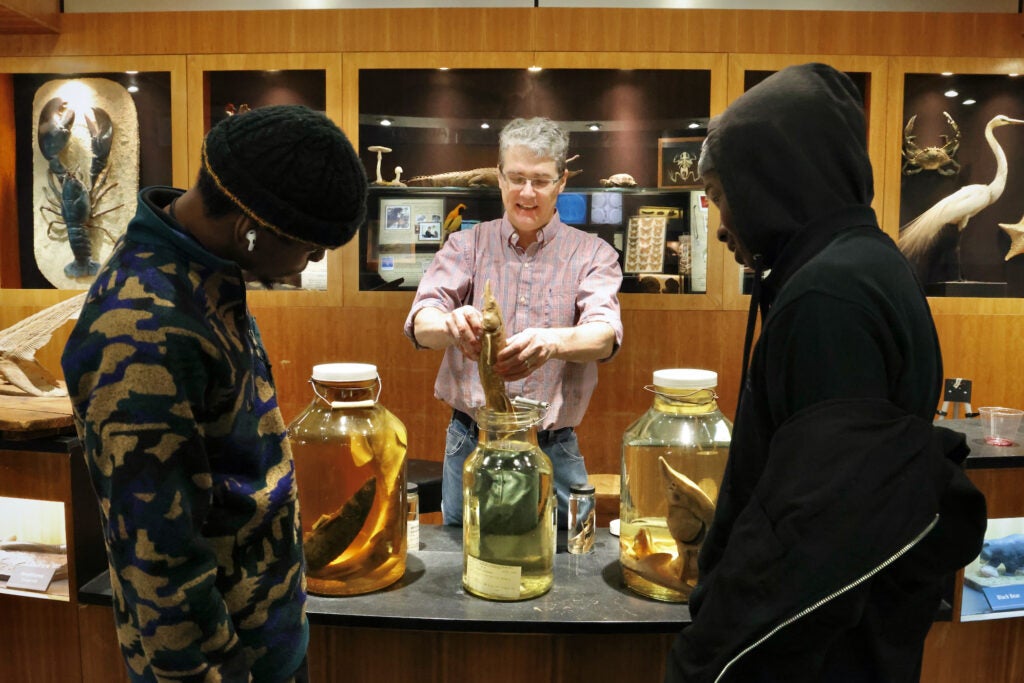
The scientists said they hope the general public in attendance at Thursday night’s event gain a greater understanding of endangered species, and how human’s actions can impact species survival.
“The idea of today was creating that awareness about what’s going on, not just with the sturgeon, but with other species … and that our actions to a certain degree affect this environment. And, because of that, the species as well,” said Mariangeles Arce H., executive director of the Center for Systematic Biology and Evolution at the Academy.

David Keller, head of fisheries at the Academy, said he’s optimistic about the future and believes there are several technologies on the horizon that can help scientists and policymakers solve some of these problems.
“We’ve made a lot of progress, but there is still a lot to be done, and there’s still a lot that can be done,” he said. “We want to make sure that we’re not adding to the endangered species list, but doing things to help take them off that list.”

Get daily updates from WHYY News!
WHYY is your source for fact-based, in-depth journalism and information. As a nonprofit organization, we rely on financial support from readers like you. Please give today.




